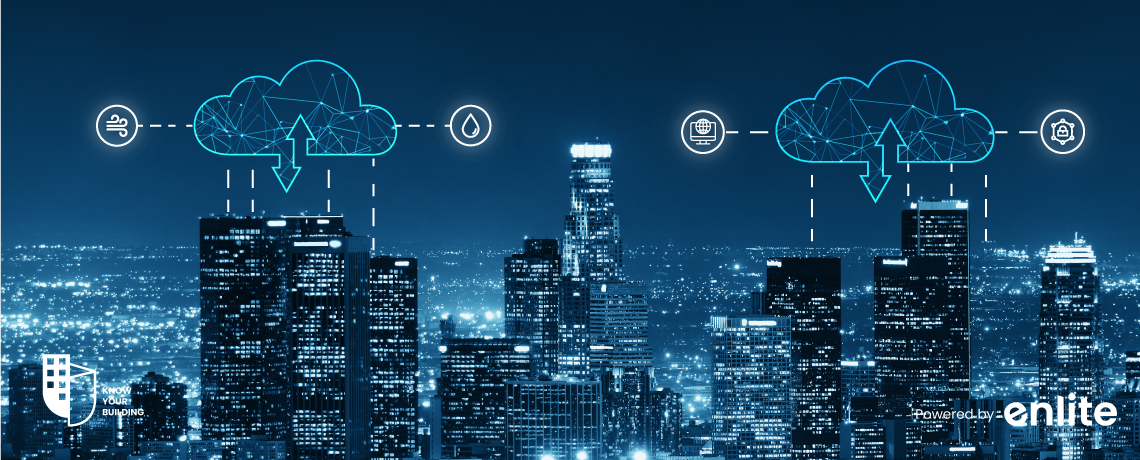Introduction
In an increasingly digital world, the management of buildings and facilities is undergoing a profound transformation. The adoption of cloud-native Building Management Systems (BMS) has become a game-changer for organizations seeking efficient, cost-effective, and scalable solutions to monitor and control building operations. This blog explores the concept of cloud-native BMS and the numerous advantages it offers to various industries.
What is a Cloud-Native Building Management System?
A Cloud-Native Building Management System (BMS) is a modern and technologically advanced approach to managing and controlling various systems within a building, such as HVAC (Heating, Ventilation, and Air Conditioning), lighting, security, and energy management, through cloud-based software and infrastructure. Unlike traditional BMS, which often relied on on-premises hardware and software, a cloud-native BMS leverages the power of the cloud to provide greater flexibility, scalability, and accessibility. This system allows facility managers and operators to remotely monitor and control building systems, access real-time data, and make data-driven decisions from anywhere with an internet connection. Cloud-native BMS solutions offer benefits such as improved energy efficiency, reduced maintenance costs, and a seamless user experience, making them an integral part of modern smart buildings and sustainable facility management practices.
How Cloud-Native BMS Differs from Traditional Systems
To grasp the full scope of the benefits, it’s important to understand how cloud-native BMS differs from traditional BMS. Traditional BMS are typically hardware-centric, with centralized controllers and limited connectivity. In contrast, cloud-native BMS is software-driven and relies on the cloud for data storage, analysis, and remote access.
Components and Architecture
A typical cloud-native BMS comprises several key components, including:
Cloud Servers: These servers store and process data, making it accessible from anywhere with an internet connection.
IoT Devices: Sensors and devices are deployed throughout the building to collect data on various parameters.
Edge Devices: These devices locally process and transmit data to the cloud, reducing latency.
User Interfaces: Web-based interfaces or mobile apps allow users to monitor and control building systems.
The architecture is designed to ensure that data is collected, processed, and acted upon efficiently.
Benefits of Cloud-Native BMS
One of the most compelling reasons to opt for a cloud-native BMS is the numerous benefits it brings to the table. Below, we’ll explore some of the key advantages that organizations can leverage.
Scalability and Flexibility
Cloud-native BMS offers unparalleled scalability. Whether you’re managing a small office or a large industrial complex, you can easily expand the system to accommodate the growing needs of your building. The cloud infrastructure allows for the seamless addition of new sensors and devices, making it adaptable to various building sizes and types.
This scalability is particularly valuable for businesses with expansion plans, as they can seamlessly integrate new buildings into the existing BMS infrastructure without significant hardware investments.
Cost-Efficiency
Traditional BMS can be capital-intensive, requiring substantial upfront investments in hardware and software. Cloud-native BMS eliminates the need for on-premises servers, reducing capital expenditures. Furthermore, it often follows a subscription-based model, allowing organizations to pay only for the services and resources they use. This “pay-as-you-go” approach minimizes ongoing operational costs and provides cost predictability.
Moreover, cloud-native BMS systems are typically more energy-efficient since they can optimize the usage of building systems, which leads to additional cost savings.
Remote Access and Monitoring
One of the standout features of cloud-native BMS is its ability to offer remote access and monitoring. Authorized personnel can manage and monitor building systems from anywhere with an internet connection. This remote capability is particularly valuable for troubleshooting, adjustments, and monitoring, especially in the context of a rapidly changing and often decentralized workforce.
For instance, a facility manager can diagnose HVAC issues or adjust lighting settings without needing to be physically present on-site. This not only saves time but also enhances operational efficiency.
Enhanced Data Analytics
Cloud-native BMS systems are data-rich environments. They collect data from various sensors and devices, which can be used for in-depth analytics. By harnessing the power of big data and analytics, organizations can gain valuable insights into building performance, energy consumption patterns, and occupant behaviors.
Analyzing this data enables organizations to make informed decisions about energy optimization, predictive maintenance, and resource allocation, all of which contribute to better building management and cost reduction.
Energy Efficiency and Sustainability
Sustainability is a top priority for many organizations today. Cloud-native BMS plays a vital role in enhancing energy efficiency and reducing a building’s carbon footprint. The system can automatically adjust HVAC settings, lighting, and other systems to optimize energy usage while maintaining occupant comfort.
The ability to monitor and analyze energy consumption patterns in real-time empowers organizations to identify areas for improvement and implement sustainable practices, such as reducing energy waste during off-peak hours.
Integration with IoT Devices
The Internet of Things (IoT) is rapidly transforming the building management landscape. Cloud-native BMS seamlessly integrates with a variety of IoT devices, including occupancy sensors and smart thermostats. This integration allows for enhanced automation, real-time data exchange, and centralized control.
For example, IoT devices can detect occupancy levels in a room and adjust the HVAC and lighting accordingly, contributing to energy savings and occupant comfort. Additionally, security systems can be integrated to provide comprehensive building security.
The benefits of cloud-native BMS extend beyond these points, but these key advantages showcase the transformative power of this technology in modern building management.














